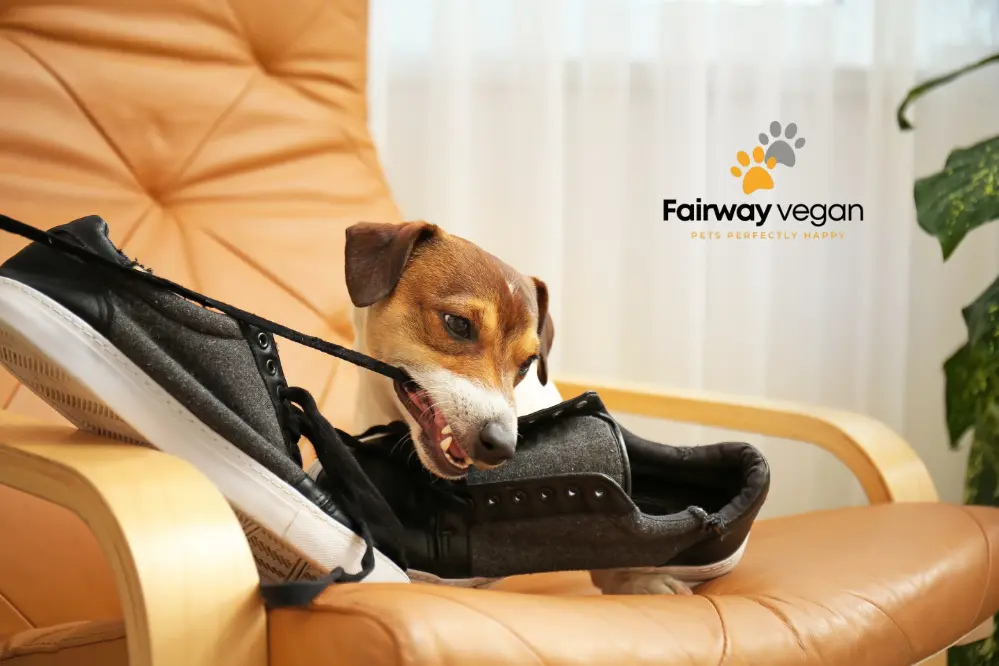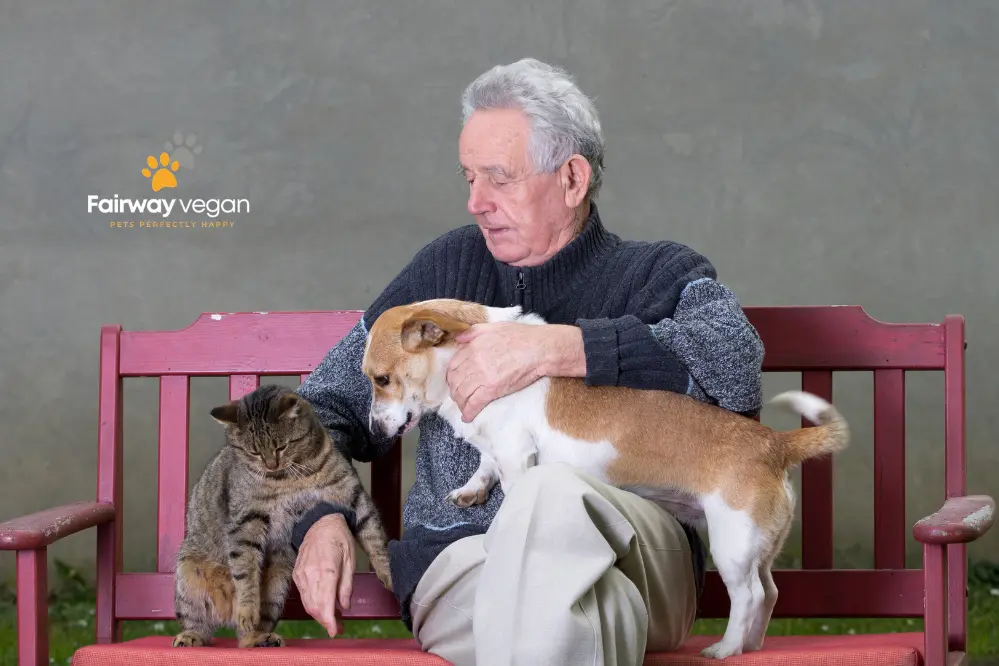Displacement Behavior in Dogs; 5 Signs and Ways to Respond

Dogs that experience conflict or stress exhibit displacement behavior. Although these actions have little to do with the present circumstances, they help the dog to release the inner struggle. For example, you could witness a dog yawning often or scratching excessively—seemingly out of place. For the dog, these actions serve as a coping technique enabling them to handle contradictory feelings.
Dogs show displacement behavior for many different causes. One often occurring reason is when people come into circumstances that produce conflicting feelings.
Consider a dog encountering someone who appears kind yet foreign. To balance curiosity with caution, the dog could show displacement behaviors.
Dogs have recognized specific factors that cause displacement behaviors. These triggers could be social events, environmental changes, or circumstances involving rivalry or resource guarding. Knowing these triggers enables dog owners to predict and control displacement tendencies. Separation anxiety in dogs could be a related situation that is often confused by displacement behavior.
TLTD; Displacement Behavior in Dogs – Causes, Triggers & Treatment
- Displacement behaviors are stress-related actions in dogs, often unrelated to the situation.
- Sniffing excessively or out of context may indicate stress or discomfort.
- Tail wagging low, stiff, or leftward can signal unease or agitation.
- Pacing restlessly is a common sign of anxiety in dogs.
- Excessive scratching, grooming, or licking may be a response to stress or agitation.
- Frequent, exaggerated yawning can be a sign of discomfort or unease.
- Emotional triggers include stress, conflicting emotions, and frustration.
- Dogs may display displacement behaviors during tense social situations or to delay uncomfortable events.
- Physiological triggers may include the release of calming hormones or nervous system stimulation.
- Redirected aggression occurs when a frustrated dog channels aggression toward a nearby individual or animal.
- Periodic mild displacement behaviors are normal, but persistent or harmful ones require intervention.
- Addressing the cause of the behavior, building confidence, and seeking professional help can minimize displacement behaviors.
What are the signs of displacement behavior in dogs?

Look for any of these habits emerging out of their natural context when you watch your dog’s behavior:
1. Smelling
Dogs like exploring their surroundings as well as for information gathering. On the other hand, your dog may be stressed if you find its nose gone crazy over nothing.
This may happen in any number of other trying circumstances or when they are overwhelmed engaging with new pets or people.
For many dogs, sniffing is also a stress-relieving activity; hence, it’s crucial to understand the degree of canine anxiety, as the exercise might help them when they are uncomfortable.
2. Tail Wagging
It’s easy to mistake your dog’s wild tail-wagging for a sign of delight, but not all wags indicate the same thing. Your dog may be frightened, agitated, or uncertain if its tail is low, sluggish, high and rigid or if it is tucked between its legs.
C Another obvious indication of its mental state is the way its tail is wagging; a wag to the left can convey anxiety or discomfort, while a wag to the right would suggest happy emotions.
3. Agitation
Even the calmest dogs might get agitated sometimes. Should your dog be pacing back and forth or from room to room, it may be in a heightened level of anxiousness without a simple means of relaxation. Dogs (and their owners) benefit most from exercise. Hence, this is a perfect moment for a leisurely, lengthy stroll.
4. Scratching
For both dogs and people, an itch sometimes strikes without warning. However, if your dog begins to scratch out of nowhere or without obvious direction, this might indicate tension or anxiety. This covers overzealous paw licking and biting as well.
5. Yawning
Yawning is not unusual if your dog just got up from a leisurely sleep; however, if it happens out of the blue, it might indicate tension or discomfort. These yawns seem brief and exaggerated, like a little jaw stretch, and can be more frequent than usual. Their ears could go back, and their eyes may enlarge in this condition; these are all indicators that you should intervene to get your dog out of its uncomfortable circumstances.
What are the Causes of Displacement Behaviour in Dogs

Displacement behaviors are thought to serve emotional, societal, and even physiological purposes. Still, specialists are not quite certain about why all displacement behaviors arise, and studies are still under progress. It is best to get your pet’s health checked after every six weeks.
Emotional causes:
The emotions of a dog might set off displacement behavior in various different ways. These are an immediate reaction to strain or stress, a means of expression for contradictory emotions.
Your dog may get enthusiasm from a new guest’s love of humans but also uncertainty because they have never encountered this person before. Your dog may get overwhelmed by these contradictory feelings and act by chewing the guest’s arm or trying to hump them all during the visit.
Emotional motivated displacement behavior may sometimes result from even bodily discomfort , suffering or dissatisfaction.
Out of context, lip licking in the absence of food nearby might be a displacement behavior.
Social Influences:
Research indicates that certain displacement behaviors in the dog world might aid in relaxing stressful circumstances (Pedretti et al.). If a dog begins to itch or yawn in response to anxiety, it may help to defuse conflict between dogs or cool over-excitement should play become too extreme. (Anna E. Hoff.)
Sometimes, unusual behavior might also be shown in an attempt to postpone the inevitable or relieve any social pressure imposed on the dog, especially in cases where your dog is expected to do an unpleasant task. Think about your dog at the conclusion of a stroll, for example.
Although they do not want the stroll to stop, they know it is time to go. To stop the stroll from ending, they could slow down and carefully smell every piece of ground on their route back to you. This displacement behavior is an apparent indication of uneasiness and helps the dog release social pressure.
Physiological Triggers
Certain displacement behaviors are thought to have only physiological purposes. Some research implies that yawning could be involved in nervous system stimulation. According to Robert Provine’s studies, yawning boosts blood flow to the areas of the brain that raise awareness, therefore aiding in decision-making while one is in inner conflict (Provine R, 1986).
Some self-directed behaviors, including overgrooming and too frequent scratching, are another instance of a physiological trigger. These behaviors may produce endorphins, which are relaxing chemicals that help an overburdened dog to settle down.
If these kinds of behaviors are often employed for self-soothing, they may turn into unpleasant routines. A dog should always be seen by a veterinarian if it grooms itself to the point of damage.
How to Respond to Displacement Behaviour in Dogs
Think about what your dog is doing, why he is doing it, and how he acts after the displacement behavior stops. These elements, taken together, will determine your response.
Does your dog’s displacement behavior result from conflict and insecurity and then resolve favorably?
The dog that is anxious about approaching another dog, for instance, plays joyfully thereafter. By helping your dog to feel confident and comfortable around other dogs, you may minimize this displacement tendency.
Plan playdates with calm, friendly dogs you know will be kind to your dog so he may have many pleasant encounters approaching and interacting with other dogs.
Does your dog’s displacement behavior stem from fear, and may things turn out badly?
For instance, a dog who alternately barks and lunges at another dog and withdraws terrified, even if the other dog is calm. This dog is agitated and, if pushed too forcefully, may bite the other dog. Should you find yourself in such circumstances, promptly and carefully get your dog out of there. Strong anxiety about other dogs should be handled with your veterinarian or a veterinary behaviorist.
Does the displacement behavior of your dog result from uncertainty or fear and cause ongoing anxiety?
For instance, the dog that remained worried out even after reaching his owner is terrified of the glossy floor. Avoiding bright surfaces, giving your dog rugs or mats to walk on, and/or a desensitizing program can assist your dog grow more at ease with the glossy flooring, therefore reducing this displacement behavior.
Does the displacement behavior of your dog by itself pose any risk?
For instance, a dog who licks one area on his leg constantly when he is frustrated or in disagreement. If this dog keeps licking, he could finally cause bald patches and even skin damage.
Try to find out why your dog is acting and, if at all feasible, remove the reason. To stop physical harm and break the habit, you probably need assistance from your veterinarian or a behaviorist as well.
Though it functions somewhat differently, redirected aggressiveness is like displacement behavior. The typical case of directed aggression is when a dog attacks his owner or a roommate instead of attacking a dog on the outside of his fence as he cannot reach it.
Extremely upset, a dog displaying directed aggressiveness does precisely what he wants to do to the first unlucky person that comes in his way instead of choosing a benign displacement activity like snatching a toy or whimpering to release that irritation.
Summary
Displacement behavior happens on a regular basis when someone is unhappy or in dispute if you can, try to figure out why your dog is upset or angry so you can deal with both the behavior and the feelings.
Initially, stay away from the situation while you get help from your vet and/or a veterinary behaviorist if your dog’s behavior could be dangerous or if the situation makes anyone feel uncomfortable.
Follow Fairwayvegan to learn about your pets and make them live their best.
Recent Comments

Top 10 Most Popular Dog Breeds in the UK

Displacement Behavior in Dogs; 5 Signs and Ways to Respond

How to Introduce Senior Dog to Kitten? 10 Steps Guide

7 Vet-Approved Homemade Dog Food Recipes for a Healthier Pup

How to Treat My Cat Eye Infections at Home

Displacement Behavior in Dogs; 5 Signs and Ways to Respond

